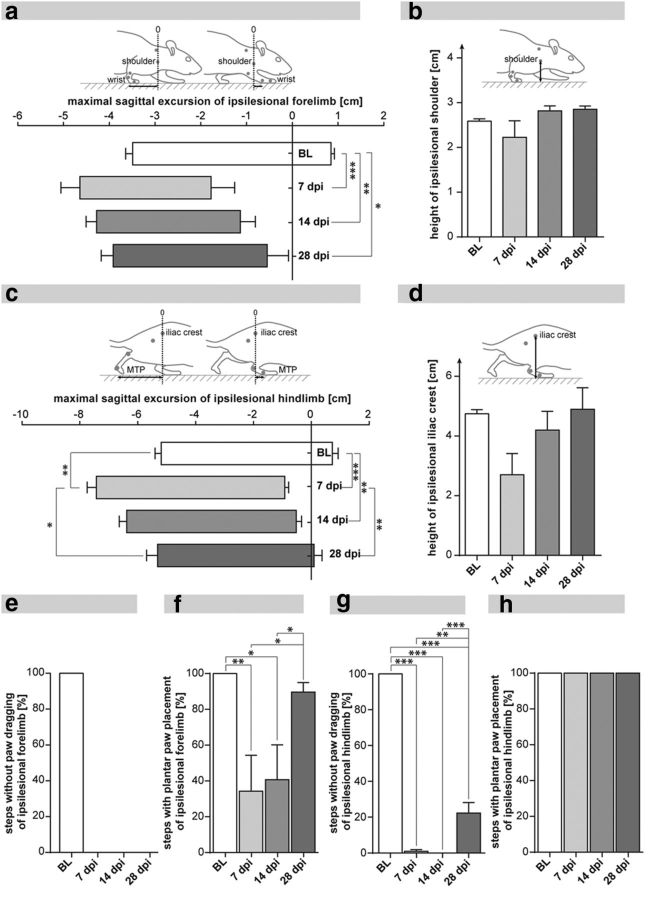Figure 6.
Locomotor impairment and recovery after unilateral C4 hemisection in adult rats. a, Protraction and retraction of the ipsilesional forelimb relative to the shoulder marker revealed substantial lesion deficits, which did not recover up to 28 dpi. b, The shoulder height of the ipsilesional forelimb was mildly impaired after injury and showed complete functional recovery until 28 dpi. c, Protraction and retraction of the ipsilesional hindlimb relative to the iliac crest marker showed a significant lesion deficit, which was followed by significant restoration of hindlimb flexion and extension up to 28 dpi. d, The height of the ipsilesional iliac crest was reduced to half acutely after injury and recovered up to baseline levels 28 dpi. e, Animals showed persistent dragging of the ipsilesional forelimb without any recovery until 28 dpi. f, The proportion of plantar steps of the ipsilesional forelimb recovered significantly after the initial impairment at 7 dpi. g, Ipsilesional hindlimb dragging was omnipresent until 14 dpi and showed incomplete, but significant, functional recovery at 28 dpi. h, Plantar stepping of the ipsilesional hindlimb was not impaired by the spinal injury. Graphs represent group mean values ± SEM. Data were subjected to one-way repeated-measures ANOVA followed by post hoc Bonferroni's multiple-comparison test. *p < 0.05. **p < 0.01. ***p < 0.001. BL, baseline; MTP, metatarsophalangeal joint.

